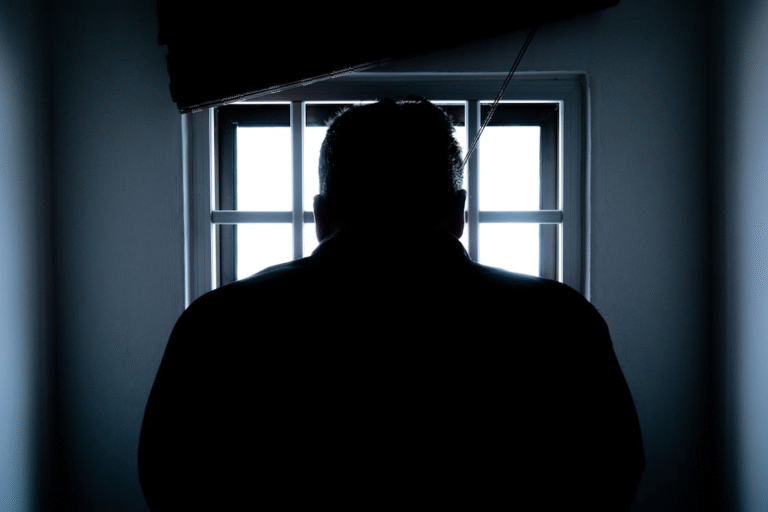Five Distinct Sleep Profiles Reveal How Our Sleep Patterns Shape Health, Mind, and Lifestyle
A new study led by Aurore Perrault from Concordia University and Valeria Kebets from McGill University has shed light on the complex links between how we sleep and how we think, feel, and function. Published in October 2025 in the journal PLOS Biology, this research analyzed data from 770 adults and identified five distinct “sleep-biopsychosocial” profiles — unique combinations of sleep habits, mental and physical health patterns, lifestyle traits, and even brain network activity.
Instead of focusing on one factor like sleep duration, the researchers took a data-driven, multidimensional approach to understand how multiple aspects of sleep interact with overall well-being. Their findings could help scientists and clinicians move toward personalized approaches to improving sleep and mental health.
Why This Study Stands Out
Most studies on sleep tend to zoom in on one variable — for instance, how sleep duration relates to depression, or how insomnia connects to stress. But when researchers try to combine dozens of isolated findings from different studies, the bigger picture often falls apart.
This new study did something different. The team used a multivariate statistical method called canonical correlation analysis (CCA), which allows them to find deep patterns across many variables simultaneously. In simpler terms, CCA helps identify hidden relationships between sets of data — in this case, between sleep characteristics and a wide range of biopsychosocial traits (including mental health, lifestyle, cognition, and demographics).
To make the analysis robust, they used data from the Human Connectome Project, a massive open-science dataset containing rich information on brain structure, functional connectivity, and behavioral measures. For each of the 770 young adults (aged 22–36), the dataset included:
- Self-reported sleep information, such as quality, duration, sleep medication use, and disturbances (collected using the Pittsburgh Sleep Quality Index).
- 118 biopsychosocial measures, including mental and physical health indicators, cognitive scores, personality traits, and lifestyle habits.
- Brain imaging data, specifically resting-state functional connectivity (RSFC) from MRI scans, which reveal how brain regions communicate during rest.
The Five Sleep-Biopsychosocial Profiles
From this rich dataset, the researchers uncovered five unique profiles, each representing a different relationship between sleep, health, and brain function. They are labeled as Latent Components (LC1–LC5).
1. General Poor Sleep (LC1)
The first and strongest profile describes people who report low sleep satisfaction, longer time to fall asleep, frequent awakenings, and daytime fatigue. These individuals tend to have higher levels of depression, anxiety, and stress, along with overall worse mental health.
Brain scans revealed that these participants showed strong functional connectivity between subcortical regions (deep brain structures involved in emotion regulation) and both the sensorimotor and attention networks. This might reflect heightened alertness or hyperarousal even at rest — a pattern commonly linked with insomnia and stress-related disorders.
2. Sleep Resilience (LC2)
This group is quite interesting. Despite reporting mental health difficulties, particularly attention-related challenges, these individuals do not report poor sleep. In other words, they show signs of psychological resilience — their mental struggles don’t seem to spill over into their sleep.
Their brain network organization is distinct, showing less disrupted connectivity, which may help explain why their sleep remains stable even under psychological stress. Understanding this “resilient sleeper” pattern could help researchers identify protective mechanisms that buffer some people against stress-related sleep problems.
3. Sleep Aid and Social Satisfaction (LC3)
The third profile includes people who often use sleep medications but also report high social satisfaction. This suggests a complex pattern: while they might rely on external aids to sleep, strong social connections may provide emotional support that protects their overall well-being. The exact brain network patterns for this group were less clear but still showed distinctive connectivity signatures.
4. Short Sleep Duration (LC4)
The fourth profile centers around short sleep duration — people who consistently sleep less than average. These individuals tend to show poorer cognitive performance, such as lower attention or processing speed.
Neuroimaging data revealed unique connectivity differences in cognitive control networks, supporting the idea that short sleep can subtly alter how the brain manages attention and executive function.
5. Disturbed and Fragmented Sleep (LC5)
Finally, this group experiences frequent sleep disruptions and fragmented rest. Their pattern links to both mental health difficulties and potential cognitive deficits. Some associations with substance use or stressful lifestyles were also noted. Their brain networks showed changes in regions tied to cognitive and emotional regulation.
The Brain Behind the Sleep
Each profile corresponded to a unique pattern of brain connectivity, which strengthens the claim that sleep quality and quantity are reflected in how the brain is wired and functions.
For example, people with poor sleep (LC1) showed stronger coupling between subcortical, sensorimotor, and attention networks — perhaps reflecting a brain stuck in “on mode,” even during rest. In contrast, resilient sleepers (LC2) maintained a more balanced neural pattern.
These neural signatures could, in the future, become biological markers for identifying sleep-related risk factors for mental health problems.
Understanding the Broader Impact
The authors emphasize that sleep is not one-dimensional. It’s not just about how long you sleep, but also about how well, how consistently, and how restfully you sleep.
Their findings also highlight the dominance of mental health variables across most profiles — showing how deeply intertwined sleep and mental well-being really are. Sleep influences everything from mood and motivation to memory and self-control.
This study adds to a growing body of evidence that different aspects of sleep can independently relate to various facets of health — and understanding those nuances can lead to better personalized treatments.
For example, rather than giving the same advice to everyone (“sleep eight hours”), clinicians might tailor recommendations based on an individual’s sleep type, psychological profile, and brain activity patterns.
Why It Matters for Everyday Life
Beyond clinical applications, these findings remind us that good sleep is foundational to mental and physical health. Chronic sleep problems are linked to higher risks of depression, anxiety, diabetes, cardiovascular disease, and cognitive decline.
Understanding one’s own sleep pattern could be empowering. For instance, if someone recognizes that their sleep problems occur alongside emotional stress, addressing mental health first might indirectly improve their sleep. Meanwhile, a “short sleeper” who functions well cognitively might simply need to monitor their long-term fatigue or concentration levels.
How This Fits Into Sleep Science
Sleep research has long shown that there’s no one-size-fits-all model. People differ in their sleep need, circadian rhythm, and sleep architecture (the balance between REM and non-REM stages).
The Pittsburgh Sleep Quality Index (used in this study) measures sleep in seven domains: quality, latency, duration, efficiency, disturbances, use of medication, and daytime dysfunction. By analyzing all these at once, this study moves beyond simple labels like “good” or “bad” sleep.
This integrative approach reflects a growing shift in neuroscience toward multidimensional modeling — analyzing how complex systems like the brain and behavior interact rather than isolating single variables.
Limitations and What Comes Next
The study does have its limits. It’s cross-sectional, meaning it captures a snapshot in time rather than long-term cause and effect. It also relies on self-reported sleep, which can differ from objective measurements like actigraphy or polysomnography.
Moreover, the sample consisted of young, healthy adults, so the findings might not generalize to older populations or those with diagnosed sleep disorders. The researchers themselves note that profiles 3 to 5 were less robust and did not consistently hold up under cross-validation tests — meaning further replication is needed.
Still, this study provides a new framework for understanding sleep not as a single behavior but as a network of interconnected traits tied to our biology and psychology.
The Takeaway
In short, this research shows that sleep isn’t just about how much we get — it’s about who we are when we sleep. The brain, mind, and body all play their part in shaping unique sleep “signatures.”
By identifying five distinct sleep profiles — from poor sleepers to resilient ones — the study opens the door to more personalized and brain-based approaches to improving sleep and mental health.
If future research confirms these patterns, we might soon see sleep assessments that go far beyond “How many hours did you get last night?” and move toward understanding the whole person behind the sleep.






